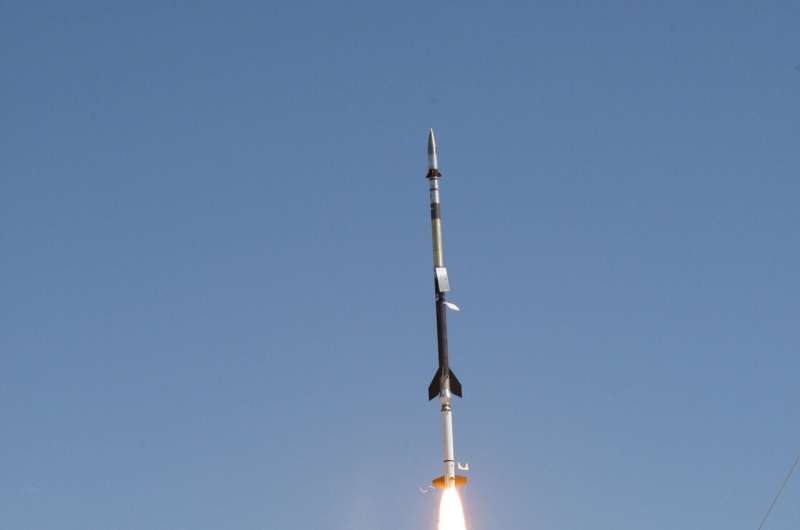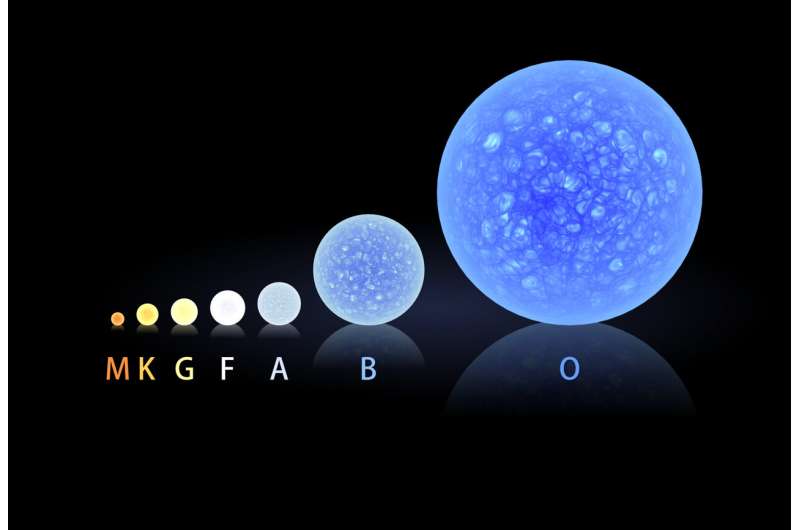Using an updated instrument first launched in 2019, the mission has a new target: Procyon A, the brightest star in the constellation Canis Minor. But its question remains the same: How does a star's light affect potential signs of life on planets that orbit it?
The Suborbital Imaging Spectrograph for Transition region Irradiance from Nearby Exoplanet host stars, or SISTINE-2, mission will have its first opportunity to launch from the White Sands Missile Range in New Mexico on Nov. 8.
Answering the question of whether life exists elsewhere in the universe is beset with technical challenges. We can't yet travel to planets around other stars, called exoplanets, to see for ourselves. Nor are our telescopes powerful enough to see their surfaces.
Instead, astronomers look to an exoplanet's atmosphere, scouring it for traces of chemicals associated with life. Water, methane, oxygen, ozone, and other so-called biomarkers produce unique patterns of light that telescopes can detect from afar. But to interpret them correctly, astronomers must look to the planet's star.
"The interplay between the planet's atmosphere and ultraviolet light from the host star determines which gases serve as the best biomarkers," said Kevin France, an astrophysicist at the University of Colorado Boulder and the principal investigator for the mission.
Some ultraviolet (UV) wavelengths, for instance, can break down carbon dioxide, freeing a single oxygen atom to combine with others and form molecular oxygen (made of two oxygen atoms) or ozone (made of three). Stars that shed enough of this light can create spurious biomarkers on their planets, sending astronomers searching in the wrong places.

The SISTINE team aims to avoid this quandary by creating a guide to the wavelengths each kind of star emits. There are many different types of stars, and we don't yet have a complete picture of their light output or how it varies over time. With a catalog of starlight, scientists could estimate if a detected biomarker is either a potential sign of life or a false signal cooked up by pesky starlight.
On its upcoming flight, SISTINE-2 will observe Procyon A, some 11.5 light-years away. Procyon A is an F-type star, which is slightly larger, hotter, and brighter than our Sun. Though it does not have any known exoplanets, studying Procyon A can help us understand F-type stars and their exoplanets throughout the universe.
"Knowing the ultraviolet spectra of these stars will help us find the most promising star-planet environments with future NASA observatories," France said.
SISTINE-2 comprises a telescope and an instrument known as a spectrograph, which breaks light into its separate colors. SISTINE-2 will focus on ultraviolet light from 100 to 160 nanometers, a range that includes wavelengths known to produce false positive biomarkers. By combining their data with existing observations of X-ray, extreme ultraviolet, and visible light from other F-type stars, the team hopes to assemble a reference spectrum that will help astronomers interpret biomarkers on exoplanets orbiting F-type stars.
SISTINE-2 is also testing hardware. Before its 2019 flight, the team applied an enhanced lithium fluoride optical coating to the instrument's mirrors to improve its UV reflectivity. The results some three years later help evaluate whether this specialized coating may be suitable for larger, longer-duration space missions.
As in its 2019 flight, the instrument will launch on a sounding rocket, a small suborbital rocket that makes brief observations in space before falling back to Earth. Ascending to an estimated altitude of about 174 miles (280 kilometers) to access ultraviolet light otherwise absorbed by our atmosphere, SISTINE-2 will observe Procyon A for about five minutes. The instrument will then fall back to Earth, descending by parachute for recovery and refurbishing.
The team hopes for a soft landing to aid in a quick turnaround to be ready for its third launch in July 2022, from the Arnhem Space Centre in Nhulunbuy, Australia. There, a refurbished SISTINE instrument will observe Alpha Centauri A and B, G- and K-type stars, respectively, similar to and slightly cooler than our Sun, and the closest such stars to us. This system is also home to Proxima Centauri, a cool red dwarf star orbited by the closest known exoplanet, Proxima B. These observations will add additional entries to the growing star catalog—small but critical steps in the search for life.
Explore further



